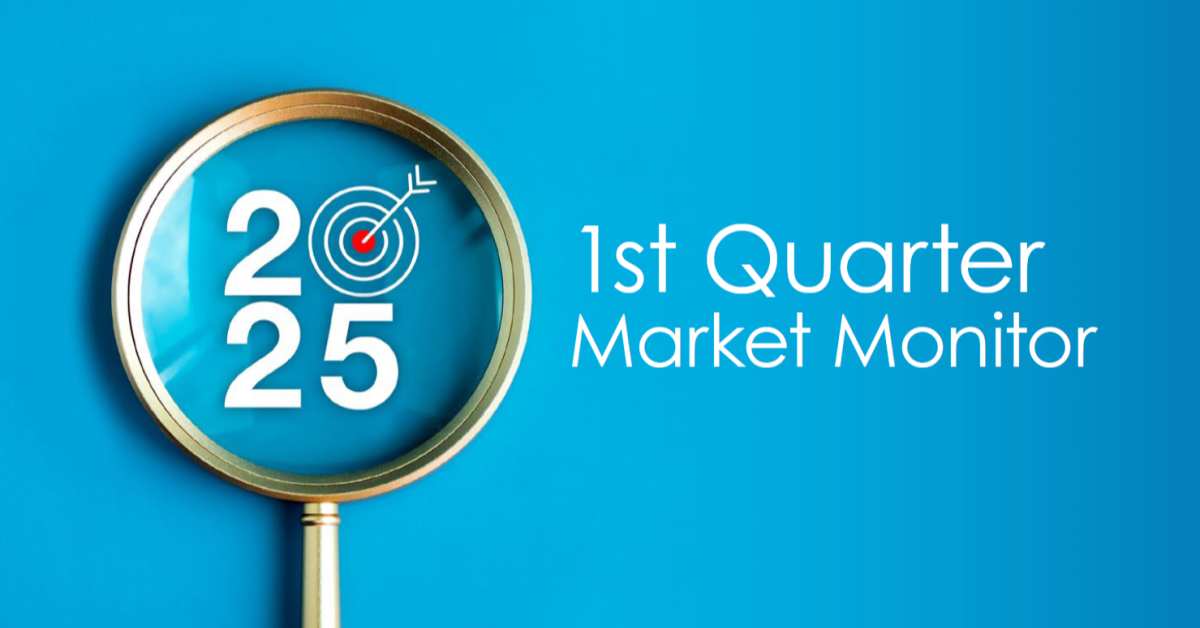July 2021
As the economic reopening gained steam, the second quarter of 2021 was another strong one for equities. Stocks again led most asset classes, with large-cap companies leading the way. U.S. stocks well outperformed international stocks, with markets like China and Japan actually declining in Q2. Fixed income markets were positive, lessening their declines for the year after a rough start in Q1.
The chart below shows the yield on the 10-year Treasury Note. Many investors regard this globally-liquid security to be the best barometer for economic growth expectations. That is, when yields are rising it means the bond market is forecasting stronger economic growth. Conversely, when bond yields are declining, it is often regarded as a precursor to softening economic growth. This is a bit of a simplified explanation, as there are also inflation expectations embedded in yields. But the question swirling right now is “Is the 10-yr yield signaling that economic growth has peaked?”

While the chart shows the 10-yr yield made its recent highs in late March of this year, we think it’s a bit too soon to draw the conclusion that growth has peaked for the cycle. For starters, economic cycles have run longer in recent years than they did historically. As such, this could easily just be a mid-cycle pause during which bond yields consolidate their early rise before experiencing another leg higher. Second, bond yields are moved by actual buying and selling in the marketplace. And there has been a lot of buying of Treasuries in recent months from hedge funds that were short (betting on higher yields) as well as foreigners who still view yields in the U.S. as attractive compared to low yields across the globe.
Even if the growth rates for GDP are peaking in absolute terms – due to the easy comparisons from a year ago when the world was shut down – the economy still looks strong and will continue to grow for years. Historically, economic expansions tend to continue until the Fed raises rates sufficiently high enough to choke off the flow of credit to the economy and cause things to slow down. The Fed is still far from their initial rate hike, let alone a series of rate hikes that raises the cost of money.
As such, we think the economic recovery is still in good shape, and that bond yields will likely rise in the back half of the year as a reflection of solid growth and still firm inflation. Speaking of inflation, while some commodity prices like copper and lumber have come down, others like oil and gas continue to rise. And labor costs appear set to rise as companies are having difficulty filling available jobs and are trying to entice new workers with higher pay and additional benefits.
Turning to stocks, the same argument above for higher bond yields applies to stocks as well, in that solid economic growth prospects should bode well for companies and the outlook for corporate profit growth. While the stock market has had a great run since the March 2020 lows, there are still areas of the market (financials, energy, etc) that have lagged quite a bit. One thing that has helped the market during recent pullbacks is that while one area of the market (such as technology) comes under selling pressure, other areas of the market see rotational buying. As such, rather than the entire market pulling back at the same time, recent corrections have been more shallow.

This stair-step pattern in the stock market is healthy, and while we could see a deeper pullback at any time, we remain favorable on our outlook for stocks. Earnings growth has been strong and should continue to be. Monetary policy is still highly accommodative which makes liquidity for financial assets plentiful.
In sum, despite the negative headlines in the media about which we continually field questions, we believe that the economy is on a solid trajectory for the near- to intermediate-term. This should support higher bond yields, which would be a near-term headwind for fixed income investments but would also provide a better buying opportunity for reinvesting. Stocks should continue to perform well as the economic recovery becomes global and corporate profit growth remains strong. In this environment, we prefer to continue to tilt balanced portfolios more to the growth side of the equation to take advantage of the economic conditions at hand.
Jordan L. Kahn, CFA Chief Investment Officer
Sources: Stockcharts.com; Seeking Alpha; Raymond James; Briefing.com; Standard & Poors; Barron’s; Charles Schwab; CNBC.com
*This Market Monitor is provided for informational purposes only and should not be interpreted as investment advice.



